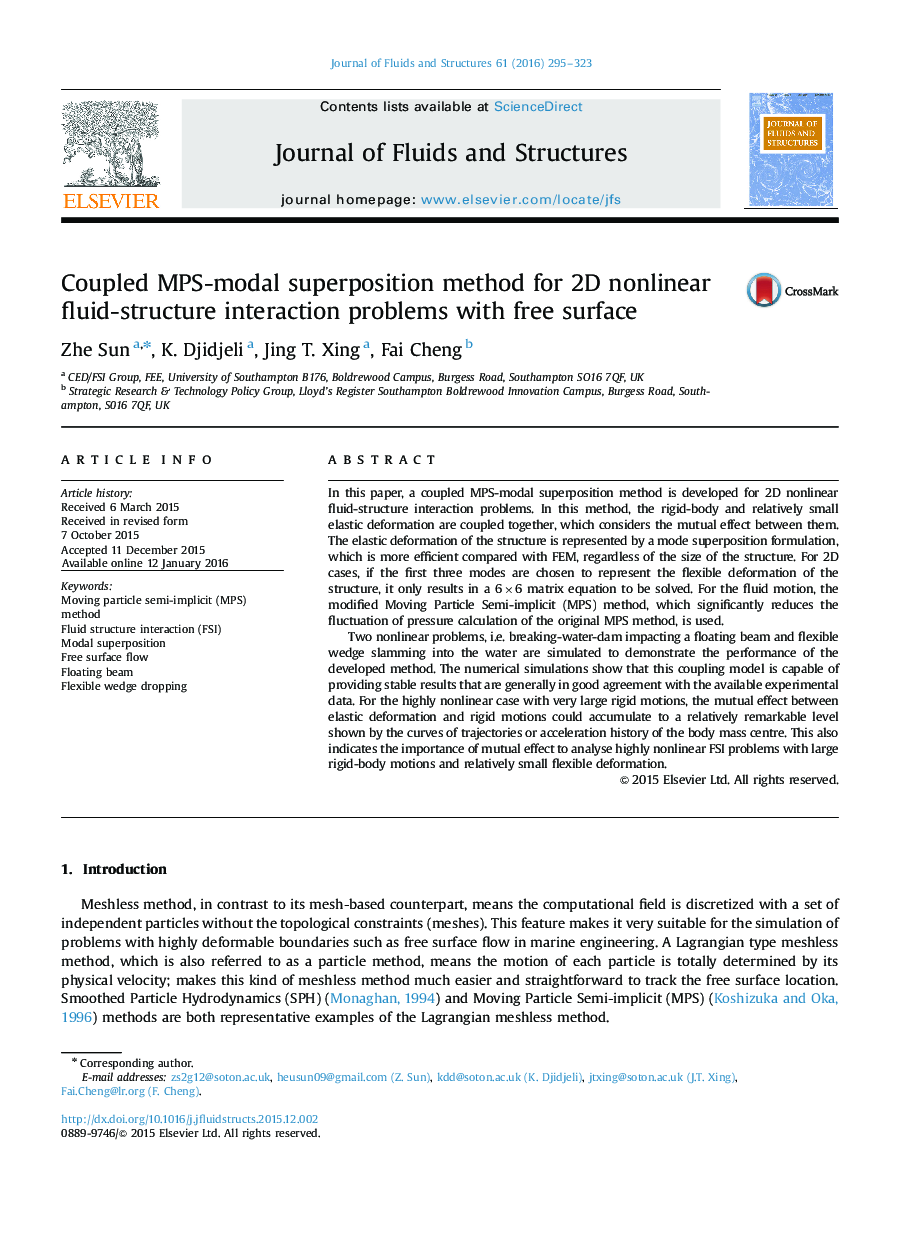| Article ID | Journal | Published Year | Pages | File Type |
|---|---|---|---|---|
| 792297 | Journal of Fluids and Structures | 2016 | 29 Pages |
•Coupling the mutual effect between rigid and flexible mode instead of calculating them separately in the traditional modal analysis.•The structural solver is more efficient than FEM analysis. For example in 2D case, if only 3 flexible modes are included, the final scale of the linear system is always 6×6 regardless of the size of structure.•The Modified Moving Particle Semi-implicit (MPS) method makes pressure calculation more stable than traditional particle method.
In this paper, a coupled MPS-modal superposition method is developed for 2D nonlinear fluid-structure interaction problems. In this method, the rigid-body and relatively small elastic deformation are coupled together, which considers the mutual effect between them. The elastic deformation of the structure is represented by a mode superposition formulation, which is more efficient compared with FEM, regardless of the size of the structure. For 2D cases, if the first three modes are chosen to represent the flexible deformation of the structure, it only results in a 6×6 matrix equation to be solved. For the fluid motion, the modified Moving Particle Semi-implicit (MPS) method, which significantly reduces the fluctuation of pressure calculation of the original MPS method, is used.Two nonlinear problems, i.e. breaking-water-dam impacting a floating beam and flexible wedge slamming into the water are simulated to demonstrate the performance of the developed method. The numerical simulations show that this coupling model is capable of providing stable results that are generally in good agreement with the available experimental data. For the highly nonlinear case with very large rigid motions, the mutual effect between elastic deformation and rigid motions could accumulate to a relatively remarkable level shown by the curves of trajectories or acceleration history of the body mass centre. This also indicates the importance of mutual effect to analyse highly nonlinear FSI problems with large rigid-body motions and relatively small flexible deformation.
